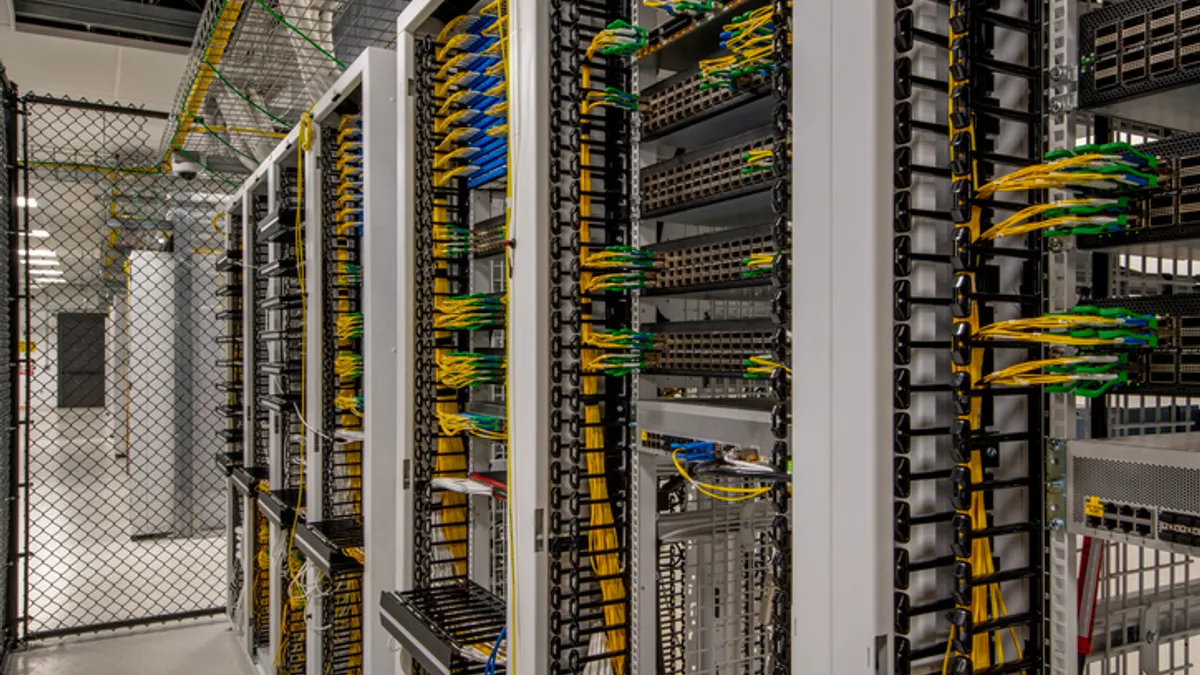Technobabble is our look at the weird, wonderful and wildly creative aspects of technology and the tech industry. If you have any babble, feel free to email directly or reach out on Twitter.
On Monday, while sitting at the lunch table with colleagues, a conversation regarding smart and integrated technology in the home came up. Discussing the technologies people put into their homes — from smart thermostats to smart ovens — I took the skeptic's perspective, expressing doubt about the security of integrating appliances into a home network.
Until the technology is proven to be completely secure, I am hesitant to allow cybercriminals control over an appliance that can reach high temperatures, I said. While this brought on completely warranted jokes about "paranoia," one sales team member focused in particular on the randomness of cyberattacks.
His stance was that it wouldn't happen to him, because he didn't matter to cybercriminals. Others could be victimized, but not necessarily him.
On Tuesday night, that same person received an automated message from TD Bank's fraud department alerting him to suspicious charges on his card. Alongside a legitimate charge on his card was $120 charge for a gift shop in Nigeria, a $200 charge in Hong Kong, a $3 charge at a restaurant in Mississippi and a $0.27 charge at a restaurant in West Virginia.
After confirming "these were definitely not purchases that [he] had made," he was passed to a customer service representative in TD Bank's fraud department who locked his card, declined the fraudulent charges and arranged for a new card.
While TD Bank's response was quick, questions abounded, particularly because he is unsure where his banking information was taken from.
But how does he feel about it? "Kind of stupid, honestly," he wrote in an email. "I've had a bank account and debit card for about 12 years now, and I have never once taken any kind of precautions to really protect my information. I've had friends and girlfriends who have had their account information stolen, but I figured they were probably making purchases from questionable sites, or had fallen for a phishing scam."
There is a certain intangible factor to cybercrime. People don't often see the physical consequences of a cyberattack, save for online inconveniences or the rendering of computers unusable because of ransomware. But in personal and professional spheres, people often take the stance they will not become a victim.
In a 2016 survey of more than 12,500 consumers, Kaspersky Lab found 70% of people are aware and concerned about online hacking. And almost two-thirds of respondents expressed concerns about online banking fraud.
But just 21% of consumers believe they are a target for cybercriminals, according to the report.
While my colleague still said he would buy a smart oven, his opinions about cybercrime have changed.
"[I] definitely feel a lot less like fraud protection is only for technologically illiterate ... everybody is vulnerable. I still won't go so far as to purchase something like LifeLock, which one of my aunts is trying to convince me is TOTALLY worth the $12/month," he said in an email.
For him, it's a lesson in remaining cautious about ATMs that are not directly associated with his bank or gas stations he's never been to before. But perhaps it's also a turn around of the "it can't happen to me" stance many take towards cybercrime.
One macro thing
Amazon made a splash this week when it revealed the Alexa-powered Echo was getting eyes, our sister publication Retail Dive reports. The Echo Look boasts a voice-controlled camera that could help users assess their outfits and track what they wear.
The device would take full-body photos and videos, entering them into a "Lookbook," a handy tool for assuring a user doesn't accidently repeat the same outfit. Alexa can even offer a comparison of two outfits, judging the fit, color, styling, seasons and trends, according to the report.
$AMZN reveals Echo Look which is basically a better version of Cher's 1995 closet : ) pic.twitter.com/vmUYO6CQLx
— Shannan Siemens (@ShannanSiemens) April 26, 2017
While the technology may seem novel, akin to something out of "Clueless," the technology could be a bit invasive. It's one thing to let an automated device hear you in your home. But it's another thing entirely to allow a data-transmitting device to see and connect with you.
One sociology professor in particular outlined in a thread the potential societal ramifications of having a device that can make judgments and actively interact with users.
Not just a privacy disaster; people don't understand what algorithms can infer from pictures. You are disclosing a lot of health info, too.
— Zeynep Tufekci (@zeynep) April 26, 2017
Meanwhile, for others, some opinions toward webcams may have changed.
Tech Press: you should probably put tape over your laptop camera
— Leigh Drogen (@LDrogen) April 26, 2017
Tech Press later: OMG you need an Amazon Echo Look!
One micro thing
Apple's head of artificial intelligence, Tom Gruber, wants to employ computers to help humans remember everything that has ever happened to them, according to his speech at a TED conference, Apple Insider reports.
Calling the application of technology to help preserve human memory "inevitable," Gruber envisions the technology applied to people with memory related illnesses, such as dementia or Alzheimer's disease.
For Gruber, the application of the technology could be expansive. Humans could use AI to recall everything from bad dates to the taste of a meal they had years past. Rather than using technology to replace humans, technology could be applied to preserve the more unreliable aspects of humanity.
One last thing
Looking for a bionic human? It's not a superhero you want. Instead, the first people likely to "meld" with machines are diabetics, Wired reports. Medtronic, the makers behind the a bionic pancreas, are now taking pre-orders for shipments in June.
For Type 1 diabetics, the devices could offer freedom from some of the day to day monitoring. An artificial pancreas, in the form of a computer system, controls insulin levels without user interaction. Instead, a sensor monitors glucose levels and instructs a pump to add insulin if necessary. Though users still have to provide the pancreas some instruction, the device is partially autonomous.
Loading gif from Wikimedia Commons




















